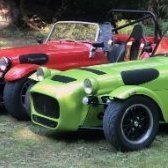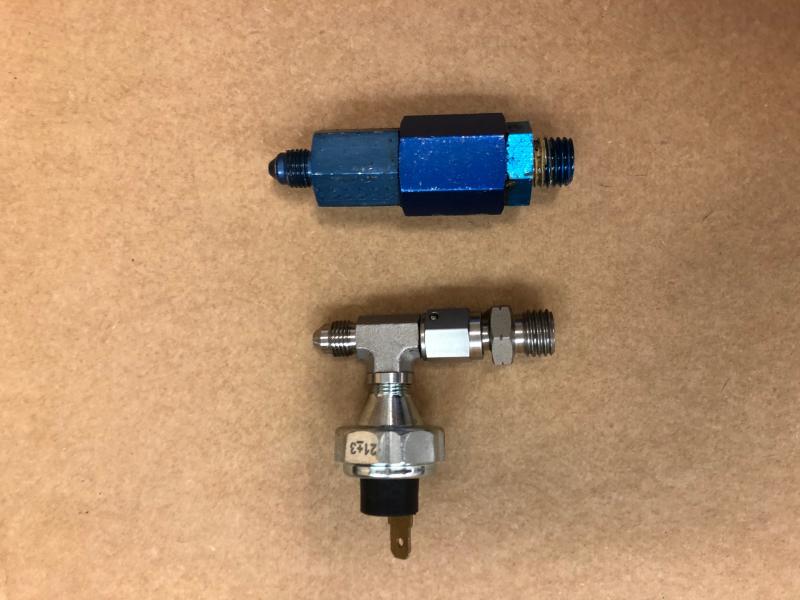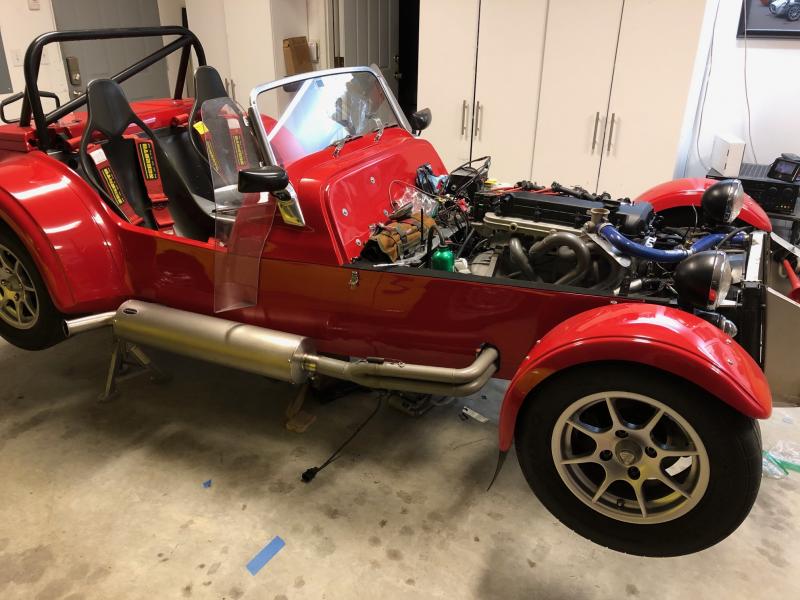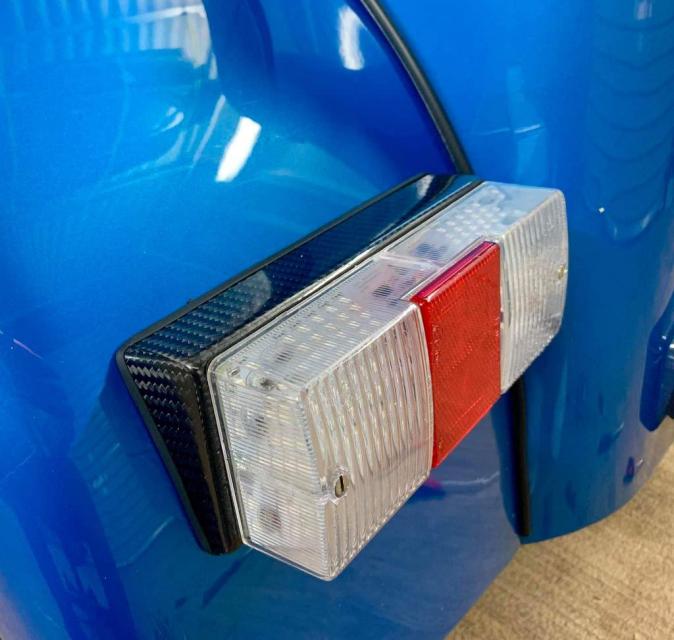-
Posts
3,087 -
Joined
-
Last visited
Content Type
Profiles
Forums
Store
Articles
Gallery
Events
Library
Everything posted by JohnCh
-
See the first three posts on this page of my build thread for pics and part numbers. It's not clear if the Zetec uses the Contour 4 cylinder or V6 version used in the Duratec, but once it's out, you'll know. Both are easy to source in the US. -John
-

The Regular Summary of Classified Ads of Se7ens Found For Sale
JohnCh replied to Croc's topic in Cars For Sale
Hey, who let this Storker guy on here?? :jester: -John -

The Regular Summary of Classified Ads of Se7ens Found For Sale
JohnCh replied to Croc's topic in Cars For Sale
Skip, I'm glad you've stuck around, but I'd love to see you get back in a se7en. I hate to say it, but a certain percent of the population consists of pretentious knuckleheads. They exist in the Porsche club (what? your engine is in front? and it's cooled by water?? you heathen!), the Lotus club as discussed above, and I've even dealt with a couple of Caterham owners over the years who fit that same profile. When discussing people who own other brands of se7ens, one of them once wrote that he recognized not everyone can afford a Caterham (sigh...) The good thing is this percentage seems much lower in se7en circles, and has been non existent here for years. Mazda had a clear vision for an inclusive community when he started this site. I'm pleased to say we've collectively done a very good job turning that vision into reality. -John -
Usually when I see a comment like this, I think someone's hyperbole generator has been turned up to 11. However, this time, I'm not sure it's even on. Very impressive result! -John
-
Looks good Paypak, What are you doing for the floor? More aluminum sheet, or a composite? I finally had time today for the break-in drive. With the grounding strap connected to the block, the engine fired right up and idled smoothly at 2500 rpm. Kent recommends keeping it at or above this mark for the first 20 minutes to ensure the cams have adequate oil supply during this critical period. The first few minutes were spent looking over the car for leaks before heading out for the drive. Engine felt great. Despite a starter map in the ECU and TBs not yet synched, it ran very smoothly and had great throttle response. After breaking the 20 minute mark, I headed home to give the car a second visual examination and sync the TBs before venturing back out to seat the rings. Much to my surprise, the oil leaks I mentioned earlier self healed after that second heat cycle. Both the sump and sump plug were bone dry. However, the mechanical oil pressure take off assembly was leaking quite a bit on either side of the T fitting for the low pressure switch. The assemble consists of an M12 male to 3AN male adapter, then a 3AN female to male T, then the 3AN female end of the line that feeds the oil pressure gauge. This set up is new. Previously there was no T, and since no one made an M12 to 3AN adapter when I built the car, 3 different adapters were cobbled together to handle that transition (old & new are shown below.) That didn't leak, but thread sealant was used on the threads. Although oil pressure seemed fine underway, it was a little low at idle when the oil was hot. Only about 23-25psi. The engine is running a 5-30W dyno break-in oil which might be part of it, but I'm also hoping the leak mentioned above was affecting the reading. We'll see. Ring seating went well. The only odd thing is that the data logs showed I wasn't exceeding 4000 rpm even though I was getting to about 5500 rpm. Something else to investigate. After putting about 30 miles on the engine, the oil and filter were changed and more break-in oil went in. I also disassembled the oil pressure assembly and added thread sealant. -John
-
I wrongly assumed this was a liquid gasket that worked particularly well, not a wicking thread locker. Interesting idea and worth exploring more. Thanks, John
-
Thanks for the tip Andy. I really don't want to remove the sump again if I can avoid it. I've done this job before with the engine in the car, and although doable, it's a royal PITA, particularly with the early sumps. For the later versions, Raceline introduced some design changes that made it far easier to use a prybar to break the seal of an installed sump. On the early ones like mine, there are very few places to get purchase, making it very difficult. Even with the engine on the stand I struggled to break the seal last Fall. With it in the car and only an inch or so forward of the bell housing, the amount of swearing required goes up considerably. Fingers crossed this is a very minor, livable drip. -John
-

The Regular Summary of Classified Ads of Se7ens Found For Sale
JohnCh replied to Croc's topic in Cars For Sale
The 310SV (sale thread here) is a great deal. I'm surprised it's still available. Having visited Bruce's shop and seen the quality of his work up close, I wouldn't hesitate to pay a premium for a car he's finished, but at $43.5k, it's hard to view that asking price as anything but discounted. The 310 is also an interesting model. Although it doesn't have the big power and torque potential of a Duratec, from what I've read, it has a weight advantage that should make the handling even sweeter. -John -
This thread is a great example of our tribal knowledge. Along the way several people have either provided answers to head scratching questions or valuable input based on first-hand experience. It's certainly made my life a lot easier. Papak, I also fabricated my boot box out of aluminum. It was an interesting challenge that taught me some new skills I've since forgotten, and enabled me to correct limitations of the original design. In hindsight I would have done it a little differently, but that's just an opportunity to attempt v2 in the future. I'm looking foreword to seeing your pictures. I still haven't had a chance to perform the break-in drive, but did find a couple of oil leaks. First is coming from the blue sump plug that provides access to the finger filter ahead of the oil pump. This one is a surprise given its torqued to spec, was fitted with a new washer, and was never a problem in the past. I'll investigate when I do the initial oil change in ~50 miles. If it's not obvious, I'll probably use a little thread sealant. The other leak(s) isn't a surprise. My sump has always been extremely difficult to seal. Taking a closer look this time when it was off revealed a number of tiny pin holes along the mating surface. I suspect that my early sump may not be up to Raceline's later quality standards making this aspect a bigger challenge. After the drive, I'll investigate more thoroughly to determine if it's coming down the threads of a fastener or if it's seeping from the mating surfaces, and go from there. Looking at the leaks did surface an installation goof. I forget to attach the grounding strap to the block. Oops. Easy fix, but might have contributed to the initial rough running. -John
-
UPS tracking showed a 12:15pm arrival time yesterday for the new accessory belt. It didn't show until nearly 5pm. Although that was early enough to install it and confirm the new size works, it wasn't enough to attempt a cam break in and ring sealing drive. It's raining today. Not sure I want to attempt that process in the wet, particularly given there is no guarantee the car won't leave me at the side of the road. However, I really want to know if it will start, and today does mark the 10 month anniversary of pulling the engine, so I called Kent to confirm that a simple start for a minute followed by a proper break-in drive tomorrow won't create any issues. They told me to go for it. To be safe, the cam lobes received another coating of assembly lube, then 3 fire extinguishers were placed between me and the engine, prayers were made to various deities (gotta cover my bases), and then I gave it a shot. At first it wasn't running on all 4, but things started to clear up before the engine was switched off. Quick post mortem revealed the primaries all felt equally warm (good), and the lower radiator hose clamp needed to be a little tighter (easy fix). The smoke seen at the end of the clip should be some coolant burning off that primary which sits directly below the fill location. Weather permitting, first drive is tomorrow. -John
-
Shroth lap belts with the Flexi II option can be configured independently for either pull or pull down, and you can move the location of the adjuster to get it pretty close to the buckle. Comes in handy if you have something like Mog or Tillet seats. -John
-
Cem, you definitely have the right attitude! -John
-
Ran into a bit of an issue with the accessory belt. The replacement is too small. Digging into it, it appears that the current one, which still has life, has stretched a lot since first installed. Over the course of its life, the steering column was replaced with a newer version that collapses and is slightly larger in diameter. When that switch was made, the belt had already stretched enough to allow that to fit, but a fresh belt creates some interference between the column and the alternator. I have a new, slightly larger, one arriving tomorrow. Other than that, the only things left are bleeding the clutch and getting fresh gas. The rest is done: all fluids, wiring, even the interior is back together. To end the weekend, I installed a special zero timing, zero fuel map in the ECU and cranked it over until I had oil pressure. Woo hoo! -John
-
Exactly what I needed, thanks! -John
-
Does anyone know the torque spec for the fill plug on a Type-9? I can't find it online or in my reference section at home. Given it's an awkward reach in the Westfield, I'd prefer to use a torque wrench to ensure I don't screw it up. Thanks, John
-
It took 90 minutes, a hoist, two floor jacks, a set of jack stands, and shockingly no swearing (honest!), but the engine is in. Still a lot of work to do before first start, but the initial attempt should happen soon. -John
-
Is it possible to make some kind of cover for the block to hide the unneeded holes and give it a finished outward appearance? Bond a piece of carbon fiber or black painted aluminum sheet to the top? I don't know what the blocks looks like, so finishing the edge of that cover might be tough (route a recess to receive it?) but it might be worth considering something like this if you haven't already gone down that solution path. -John
-
To add to the above, the SVT has bigger valves and redesigned intake ports. I believe the short block adds forged pistons and oiling changes. Stock to stock, the SVT is a big upgrade over a regular Zetec. -John
-
I had a DOH! moment Sunday night. It occurred to me that I never ordered replacement bolts for the pressure plate. After a little digging I was able to secure a set from Massive Performance here in the States which arrived today. Last night I test fit the engine without the bellhousing/transmission to confirm the engine mounts lined up and refresh my memory on wiring and hose routing. Then installed the flywheel and clutch this evening. There are a few more things to do over the next couple of nights, but I might actually be in a place to attempt installation Saturday. -John
-
Here is the carbon fiber light block. The copy states they are handmade to order, so my bet is they could supply it without the pre-drilled holes for the standard Caterham rectangular light. -John
-
I felt the same way when I rebuilt my car and went with the Land Rover lights in your last link. I don't have a good picture on this laptop, but this will give you an idea. Obviously this is a Westfield not a Caterham, so some visual differences, but also Westfield molds a flat spot in the rear wing to take the standard tail light -- i.e. no mount needed to match the back of the light with the curve of the wing as on a Caterham. As for housings, I could swear someone did a carbon fiber block for the standard lights that would work. I'll look around to jog my memory. Happy to send you a better picture if it's helpful. -John
-

New owner with a questions for a cross country trip
JohnCh replied to SanderGA's topic in General Sevens Discussion
One advantage of the hood is the ability to close up the car at night to prevent people from trying it on for size in the motel parking lot (yes, it does happen.) When I rebuilt my car down to the frame in 2004, I intentionally didn't install the provisions for the hood despite having a brand new one in the box -- just hated the experience. When touring I use a locking car cover. Something to keep in mind. -John -

New owner with a questions for a cross country trip
JohnCh replied to SanderGA's topic in General Sevens Discussion
I second the half hood and the ear plugs. I've been on a tour with crossflow cars that were tuned for sea level or close to it and we went to 10k feet in that same part of the country. Yes, they ran rich and were pretty stinky, but it was manageable. Given your talking about a much smaller delta, I wouldn't be overly concerned, but if you can acquire some appropriate jets as Andy suggests, that's your best option. Some things to consider when touring in a se7en: plan your route to ensure you can make it between gas stations, pack like you are backpacking, bring lots of water -- between sun and wind you will dehydrate -- and bring some tools just in case. Someone with a Caterham can confirm, but I stow the side curtains in the passenger area when I'm solo and behind the passenger seat if that's occupied. -John -

The Regular Summary of Classified Ads of Se7ens Found For Sale
JohnCh replied to Croc's topic in Cars For Sale
His ad and video serve as the new model for maximizing the sale price of a Se7en. I'm not sure if I found it more interesting that three different bidders were still in the running after it broke $40k, or that all the negative comments regarding the price posted by a Caterham dealer didn't make anyone flinch. Regardless, I hope the new owner feels it's worth every penny once he has the opportunity to drive it hard, and that he joins the forum. -John -
I'd say it's metric given M22 is nearly that size (0.866"), but that thread pitch is really fine for something that big. I've found this page helpful in the past when trying to figure if something is BSP, NPS, or Metric: https://trimantec.com/blogs/t/thread-identification-guide -John




.jpg.248dff64019f5a04306708d733ec8a42.jpg)


.jpg.743c9d25c823d845413937072031a5dd.jpg)